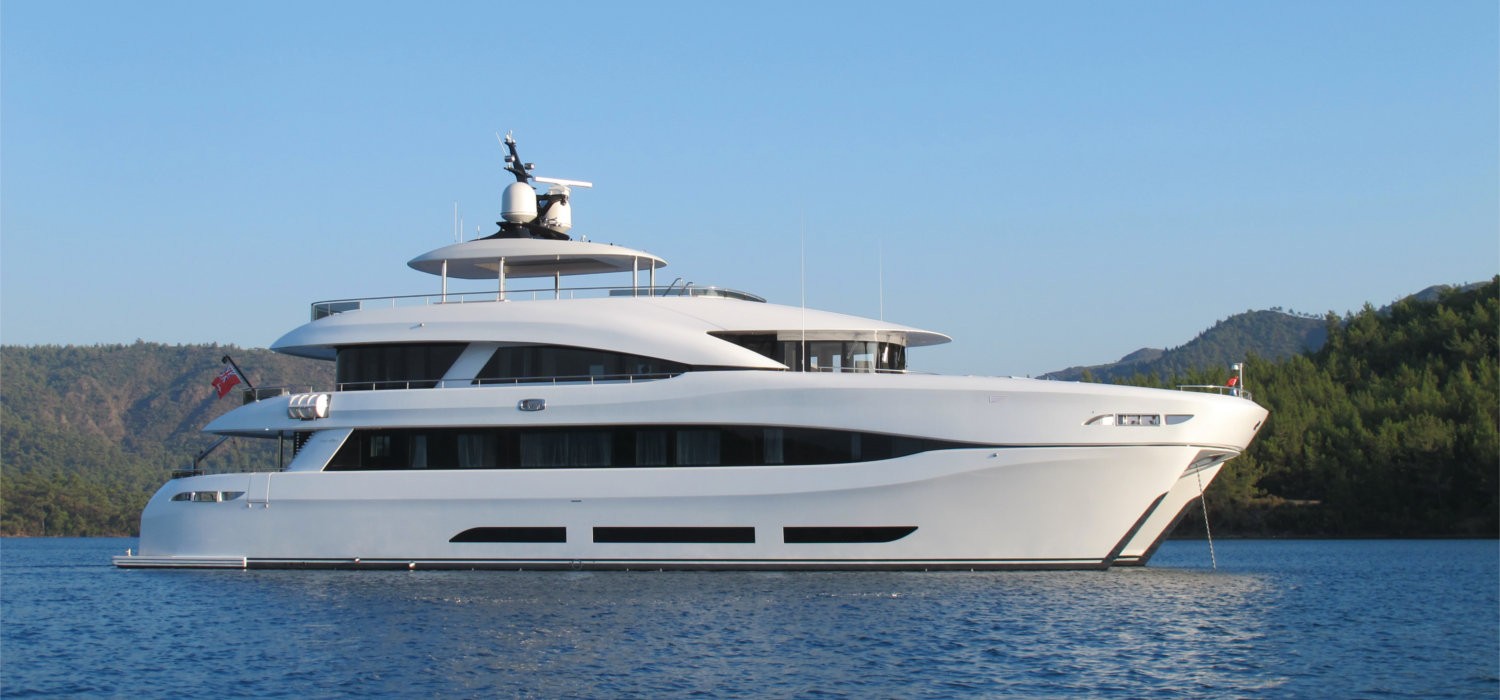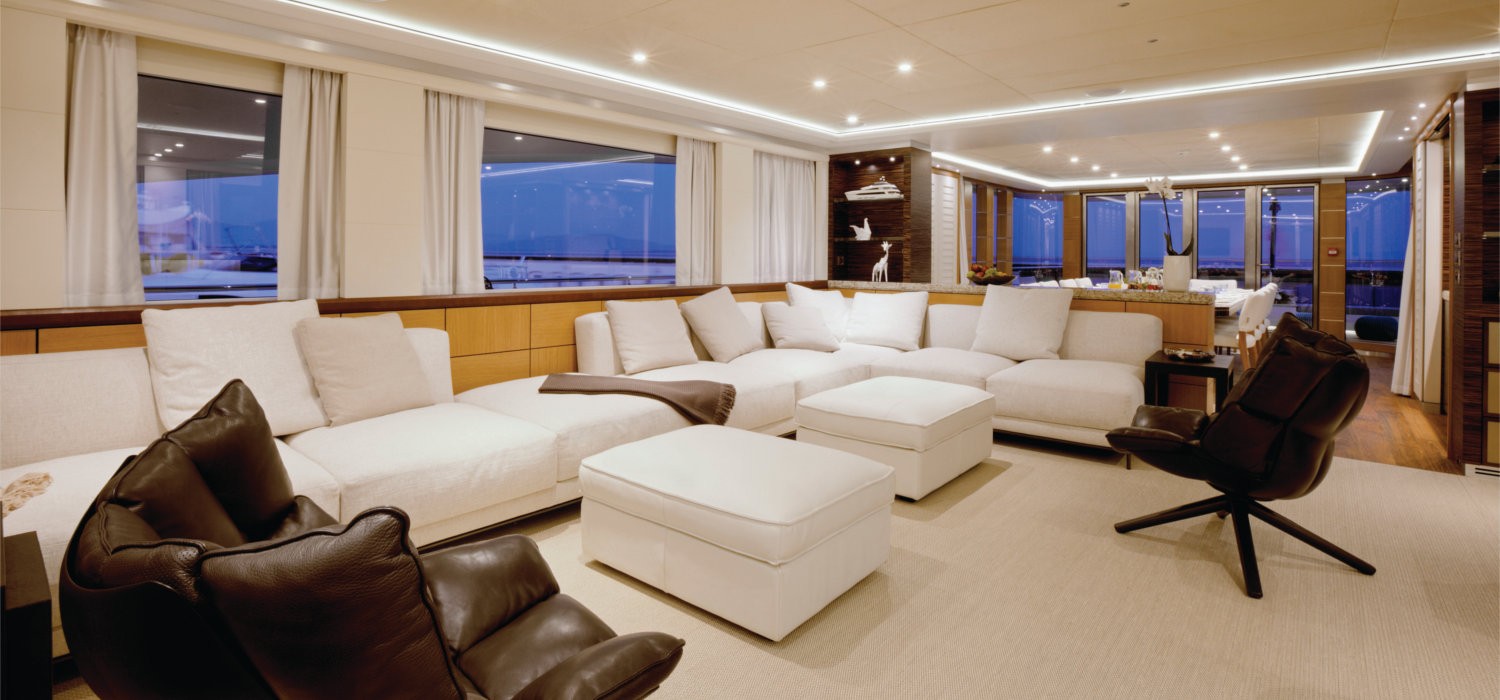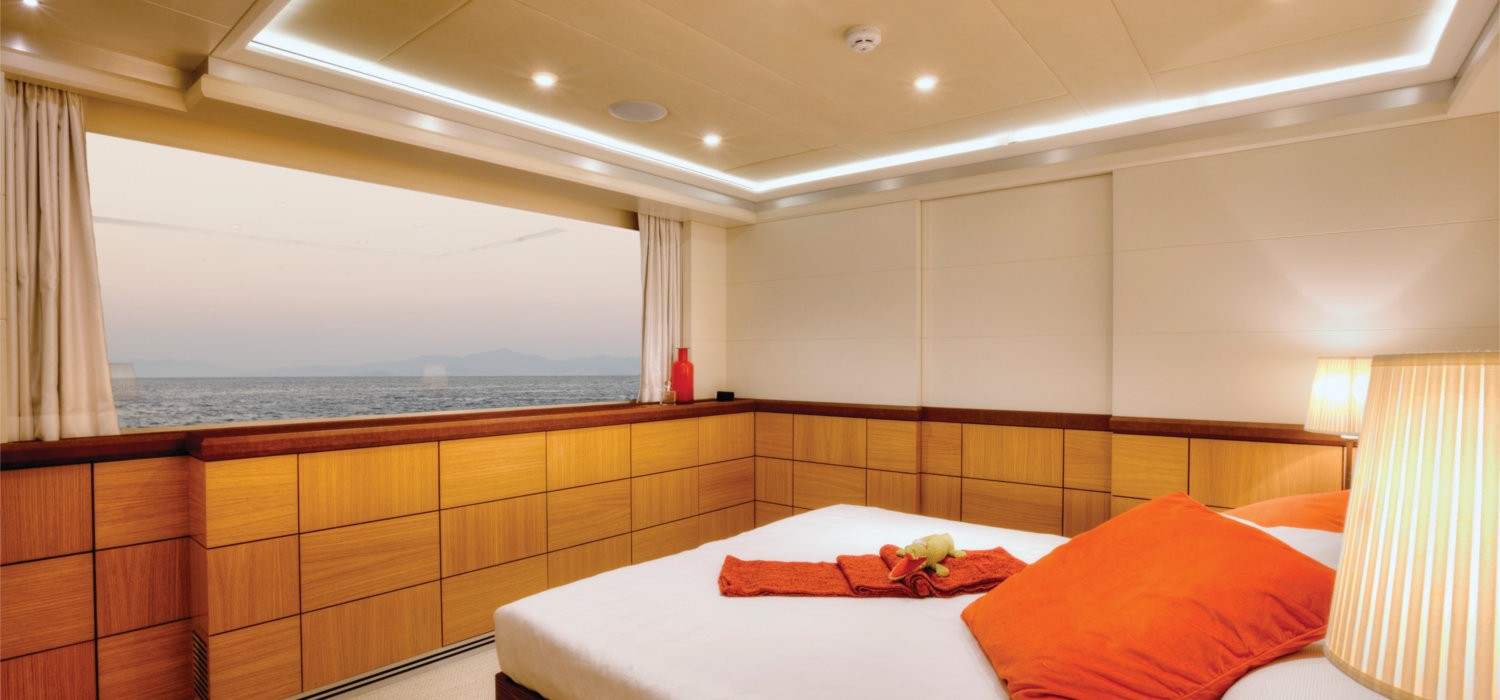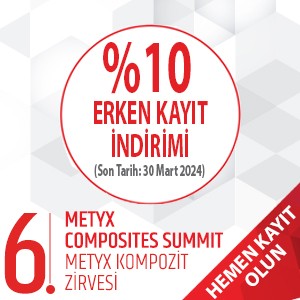The World’s Largest Carbon Hybrid Composite Catamaran
As she begins her debutant season at Cannes, Monaco, and Fort Lauderdale at some of the world’s top super yacht shows, the Curvelle Quaranta is turning the heads of many industry leaders. Now, as Quaranta embarks on her maiden marketing voyages around the yacht shows of the world, she is about to break with convention again – this time with her mode of operation. High-performance composites Conventionally, the hulls of süper yachts are built of steel and their accommodation blocks from aluminum. They are typically of a monohull design with a 30-meter high-speed hull, which is 6.5 meters at its widest point. Designers are generally forced by such physical constraints to place the sleeping cabins for passengers deep below decks, close to the yacht’s water line where the view through small portholes is somewhat limited at best. Oh yes, and most custom designed yachts are built for just one person – the owner!
Carbon, glass and epoxy
Take every single one of those concepts, turn them on their head, and you have Quaranta, a brand new super yacht fit for the 21st century. She is built with composites. METYX Composites supplied the full package of exceptional-performance GRP materials used to construct the twin catamaran hulls and her entire accommodation block. Large quantities of METYX Composites biaxial and carbon-glass hybrid reinforcements, Airex core materials, Hexion epoxy, and Aerovac vacuum consumables were supplied to Curvelle to build the yacht at the Logos shipyard in Tuzla, Turkey. Using advanced materials has a long-term cost benefit when it comes to operating the yacht. Lower weight, lower maintenance, higher durability, and greater longevity of the product all add to her appeal in the current yacht buyer’s market.
Massive Windows
With the massive amount of space available across a yacht that is nine meters at its widest point, the designers have been able to give passengers the luxury of main deck cabins. Each of these luxuriously appointed sleeping suites has a massive window through which to see the world as it cruises by. The strong sandwich structure makes possible these side openings that are 2.7 meters in length and 0.9 meters in height. The Italian classification society, RINA, has given the openings their approval, certifying Quaranta with an unrestricted range – classification for commercial yachts and verifying that the vessel complies with stringent commercial yacht MCA regulations. Because of her wide beam and four decks of living accommodation, the 33.7-meter motor yacht has the interior and exterior space equivalent to that of a 40-meter performance mono-hull yacht. It was this fact that gave rise to the yacht’s name Quaranta meaning forty in Italian.
Syndicated ownership
Aboard an ordinary monohulled süper yacht, there would generally be six double staterooms. Here, due to the design flexibility, you get to choose how many you want. Have three, four, five or six! It is up to you, and if you get bored with the layout you have chosen, chances are the crew, given an hour or so, can switch it around. The reason for such a radical shift from the normal lies in the marketing of this yacht. Where most super yachts are built for a single owner to enjoy, this one is destined to have a total of seven owners through an innovative syndicated ownership plan which has ironed out the kinks that have caused disappointments for those who have tried it before. Luuk van Zanten believes it is important for as many people as possible to enjoy all the pleasures of a luxury motor yacht lifestyle. With syndicated ownership, he is convinced it is possible to do so with only a fraction of the commitment. This yacht would cost about $14 million to buy outright. When sold to seven entities, each pays $2 million, and everyone gets help from the company to run the boat and make sure that the figures they jointly pay are roughly the same as if they owned the boat outright. Those who use the boat more pay more. Those who dock in St. Tropez in high season pay more than those who dock elsewhere in low season. The group of owners is in control and decides how to manage the yacht. Given her low finished weight, Quaranta can be classified as a performance yacht, meaning she is capable of speeds up to 20 knots but is more likely to cruise at slower speeds. At nine knots, she has enough range to cross the Atlantic Ocean on a non-stop journey that would take between one and two weeks. This allows each of the yacht’s seven owners to enjoy several weeks of summer cruising in the Mediterranean and winter sunshine in the Caribbean.
Groundbreaking work
Quaranta is the culmination of five years of work for the yacht’s project manager and visionary, Luuk van Zanten. He spent years in the planning and conceptual stages before the construction team began the in-house engineering of the one-off male plug. The one-shot vacuum bagging process on a catamaran is harder than in a monohull vessel because of the shape of the twin hulls. Quaranta is the largest carbon-hybrid composite catamaran ever built in the world, and it is unique because of the METYX Composites carbon- hybrid reinforcement used in the construction. Production Manager Sertac Serbest,who oversaw the yacht’s construction says, “Our supplier, METYX Composites, was particularly helpful at the early stages of the project with our preparations of the appropriate materials and the selection of the GRP consultancy company. As our composites solutions partner, we worked in great accord with their team during the design, development, and production of this revolutionary super yacht. They have proven themselves to be not only an exceptional manufacturer but also a comprehensive supplier for our turn- key composite needs.”




